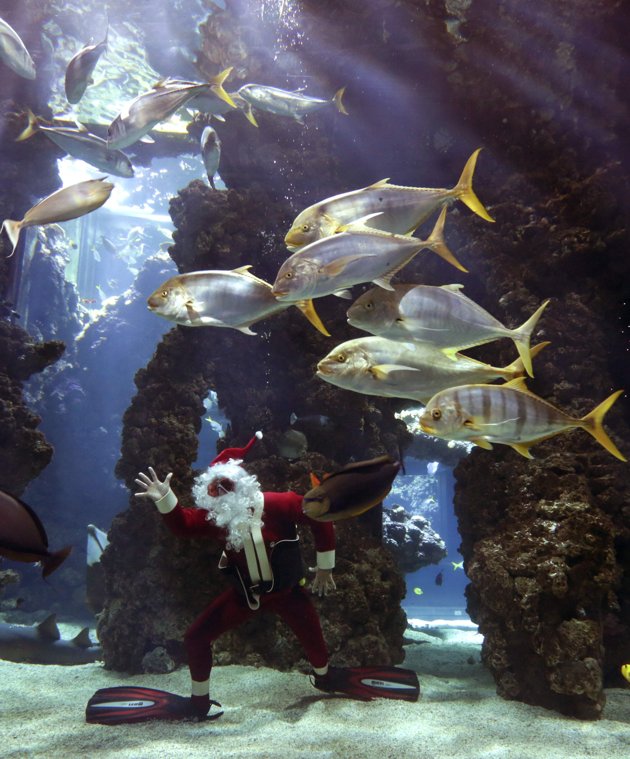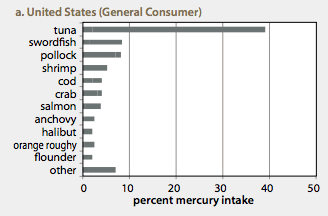by Michael Reuter
Editor’s Note: Michael Reuter serves as director for The Nature Conservancy’s North America Freshwater Program and for the Great Rivers Partnership.
Think the “fiscal cliff” is the worst of our worries? Pour yourself a glass of water. In it you can see the illusion of abundance for most of us in North America.
Just as we raced through the ‘80s and ‘90s with checkbook in hand, all the while amazingly ignorant or unwilling to discuss the makings of a deficit crisis, today we splash around in a wet abyss of ignorance about the health of our water-related infrastructure and the economies that depend on it.
Consider these warning signs:
More than half the states in the U.S., including many of those that are the most agriculturally productive, declared drought disaster in 2012. The vital shipping corridor on the Mississippi River is at risk of shutdown — a system that’s serves a port district that ships more tonnage than any other in the world. It’s anybody’s guess how much that will affect the price of food or a gallon of gas if this continues unabated.
Ironically, the year before, the Mississippi and Missouri rivers experienced record flooding, which devastated crops and communities. The difference in 2011 over 2012 water levels surpassed 60 feet.
Compounding the issue, the Army Corps of Engineers estimates a $60 billion backlog of water infrastructure projects, including needed repairs to dams, levees and the like. Meanwhile, the EPA has estimated the nation will need to invest $334.8 billion between 2007 and 2027 in order to deliver safe drinking water. How much are you willing to pay for a glass of clean water?
Demand for water now exceeds supply on the Colorado River, which provides water and electricity to some 40 million people in fast-growing cities including Phoenix, Las Vegas, Los Angeles, Denver and Salt Lake City. Water levels in Lake Mead and Lake Powell have decreased dramatically. In fact, the river now dries up before it reaches the sea. And scientific projections call for a 20 percent reduction in precipitation in coming years and an 83 percent in increase in population by 2050 in this basin.
Think this won’t affect folks who don’t live in these places? Think again. Water in the Colorado River provides irrigation for nearly one-third of the nation’s winter crops and 13 percent of our livestock.
So is there any chance we could learn a lesson from the fiscal cliff debacle? Better yet, can we see the relationship between these crises? If we did, we would recognize it’s the right time to invest in our natural and built water infrastructure. Some reasons:
Jobs: We need them. Consider the economic impact of the Mississippi River. More than half of the goods and services consumed by Americans are produced with water that flows through this system. It’s an economic engine for many of the 31 states the basin drains.
Water: Our competitive edge. It’s not our labor, our factories or ingenuity alone that makes this nation competitive on a global scale. It’s also our ability to ship goods to and from our ports using more navigable waterways than the rest of the world combined. Our inland and intracoastal waterways directly serve 38 states, moving some $73 billion worth of goods each year.
Prevention: Disasters are costly. We have learned some important lessons about managing floods. In addition to dams and levees, we need to invest in “natural infrastructure” like floodways or floodplains to provide sufficient room for rivers during floods. The return to taxpayers on such investments would be measured in the billions of dollars.
Communities: Quality of life depends on natural systems. Healthy rivers provide a plethora of benefits for people and nature. For example, clean water flows out of our floodplains that act as natural filters, removing excess sediment and nutrients that increase water treatment costs. Where water flow is slowed by nature, it has more time to seep into the ground and can replenish underground water sources (or aquifers), which serve as an important source of water for farmers and communities. These are some of the richest habitats on Earth, drawing outdoor enthusiasts of all sorts and boosting our local and national economies. The Outdoor Industry of America recently released an in-depth study that found outdoor recreation provides 6.1 million jobs and accounts for $646 billion in spending each year.
We shouldn’t ignore this hidden crisis as we dismissed the economic issues that led us toward the fiscal cliff. Similar to mortgage derivatives and other obscure financial instruments, the myriad of human and man-made causes to our water infrastructure crisis are very complicated, but too important to ignore.
To address such issues within the Mississippi River basin, we’ve established America’s Great Watershed Initiative. This is an initiative that brings together leaders from agriculture and industries as well as government, academia and nonprofit organizations to help find common ground about how to make strategic investments in the health of the entire basin for the benefit of people and nature.
On the Mississippi and at great rivers around the world, it will take collaboration, compromise and careful planning to create management approaches that optimize the many uses of our rivers well into the future.
Reprinted from the St. Louis Post Dispatch.
Gazette Fair Use Statement
![Santa_Monica_Aerial_355x280[1]](http://purewatergazette.net/blog/wp-content/uploads/2012/12/Santa_Monica_Aerial_355x2801.jpg)




![23Dec[1]](http://purewatergazette.net/blog/wp-content/uploads/2012/12/23Dec1.jpg)





